Friday, April 09 2021
As I mentioned in my previous blog, I have recently accepted the challenge of cataloguing and translating HEC’s foreign language archival material (see the first installment in this blog series here). This second blog is about my favourite foreign language object that I’ve catalogued so far- a booklet titled First Soviet Steamboat "Tovarishch Stalin" published in 1927 (Tovarishch meaning “Comrade” in Russian).
At first, I was quite apprehensive about cataloguing a booklet in Russian, not only due to its lengthy content compared to the one-page documents that I usually catalogue, but because of the language itself! Whilst being very confident with my German, which I learned at school since I was 11, I started learning Russian ab initio at university as my second foreign language. Furthermore, my Russian nautical knowledge only extended to Peter the Great’s time abroad at European shipyards (where he was apparently quite mischievous and frequently drunk) and the scarlet sails in Saint Petersburg. Having lived in Saint Petersburg as part of my degree, I had the privilege of seeing the spectacle of the scarlet sails, during which the sails of the ship Shtandart are illuminated with red lights. This is a tradition that takes place every summer as part of the White Nights Festival when the sun never completely sets.
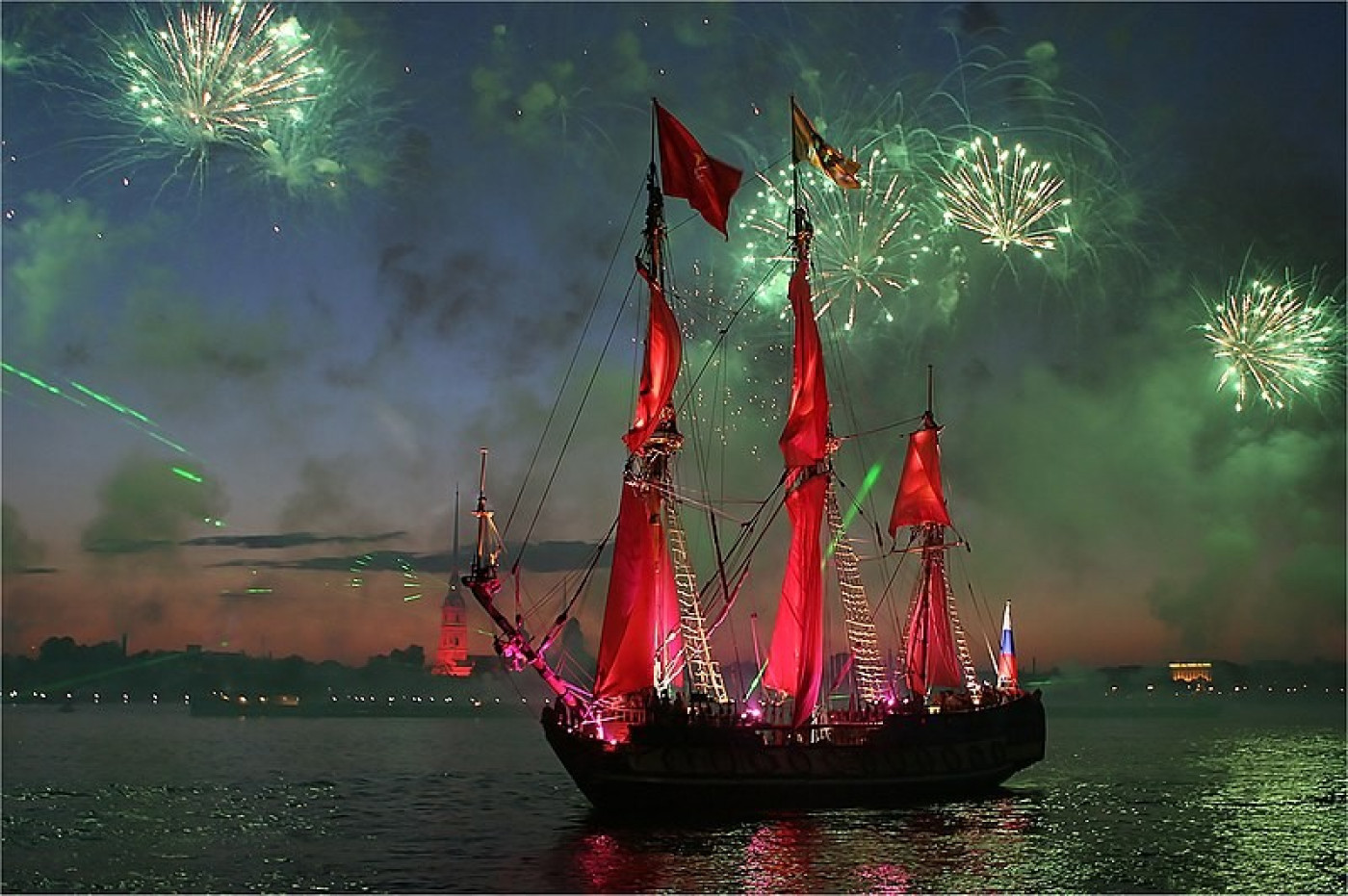
The first thing that struck me about this booklet was the beautiful, eye-catching red cover, embossed with silver writing and the classic hammer and sickle symbol, which immediately tells you that this is, without a doubt, an object from the USSR.
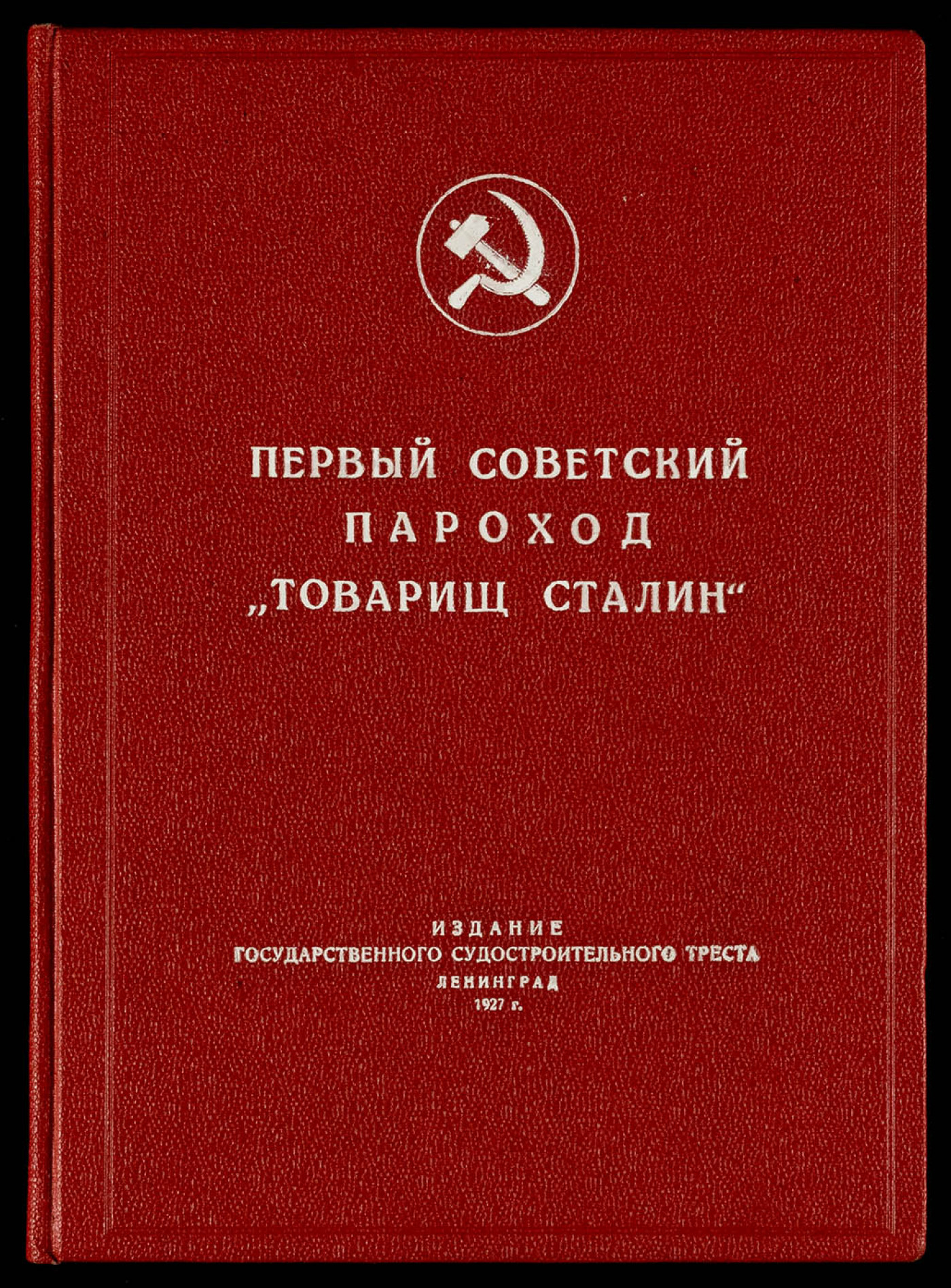
Although it’s unclear why a booklet was written about this steamer in particular, from what I could decipher from the introduction, Tovarishch Stalin was the first seafaring vessel built in Soviet shipyards for the Soviet Merchant Fleet. I didn’t translate the whole text, as this would have taken me at least a week as a non-native speaker, despite my degree. Instead, I attempted to translate as many of the image captions and Soviet banners as I could!
Immediately at the start of the booklet, the excitement surrounding Tovarishch Stalin’s construction is captured in this image:
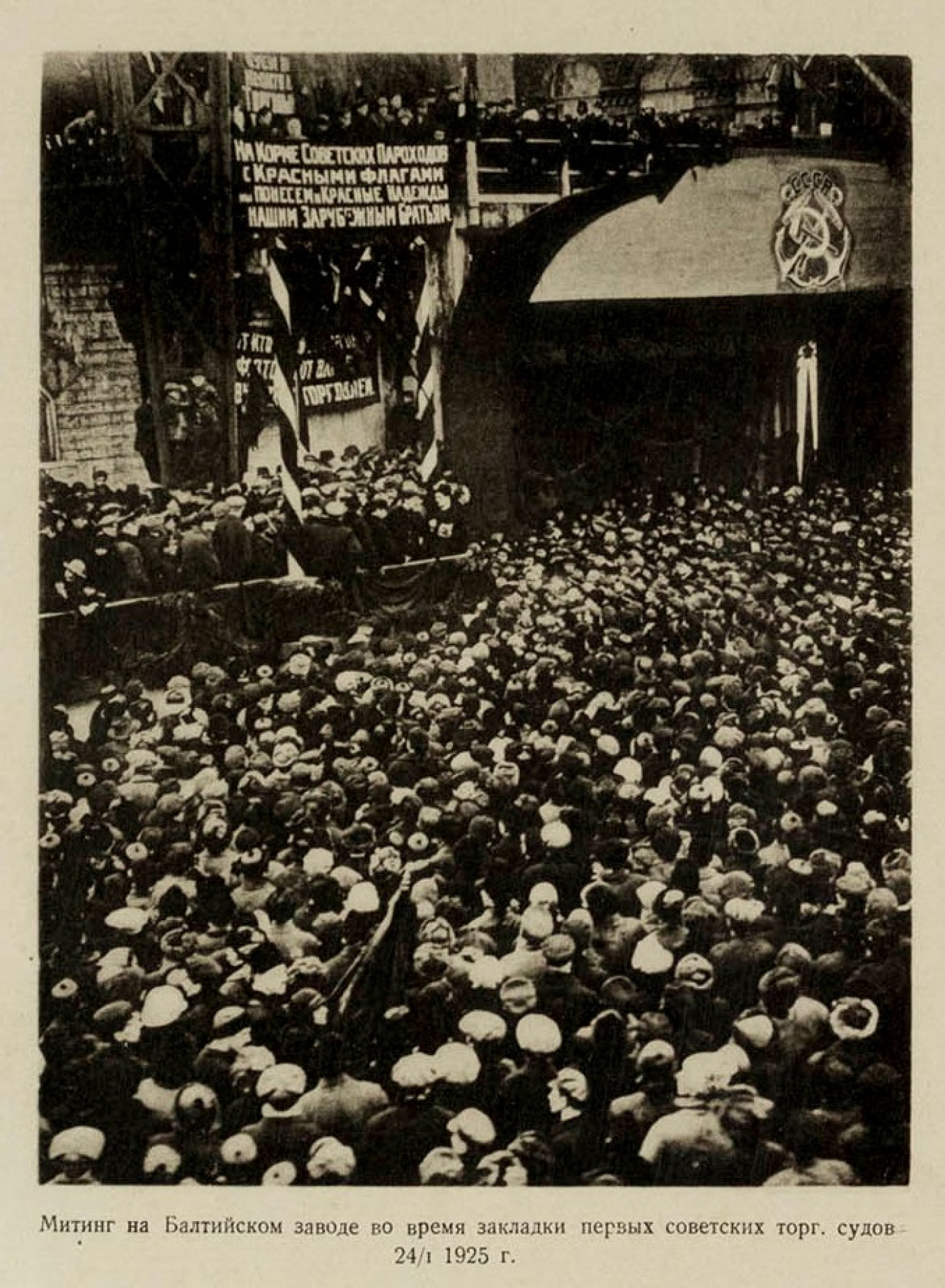
Caption translation: “Rally at the Baltic Shipyard to celebrate the construction of the first Soviet merchant ships”
Out of interest, I translated the text on the flag in the photograph which proudly states: “At the stern of Soviet steamers with red flags, we will carry red hopes to our foreign brothers”- again, like the book’s cover, very Soviet!
The booklet then goes on to discuss the steamer’s classification: “Steamers are built to the highest standard of 100A1 according to English Lloyd’s rules and regulations...”. I nearly overlooked this section due to its technical complexity, but an interesting detail caught my eye. I noticed that the USSR had its own star-shaped symbol to mark a ship classed as the highest standard, similar to the 100A1 cross symbol used by Lloyd’s. These small details are part of what makes cataloguing objects from different countries and cultures so interesting!

The following section of the booklet details the construction of Tovarishch Stalin, featuring a selection of photographs, technical illustrations and drawings. This is my favourite image from this section:
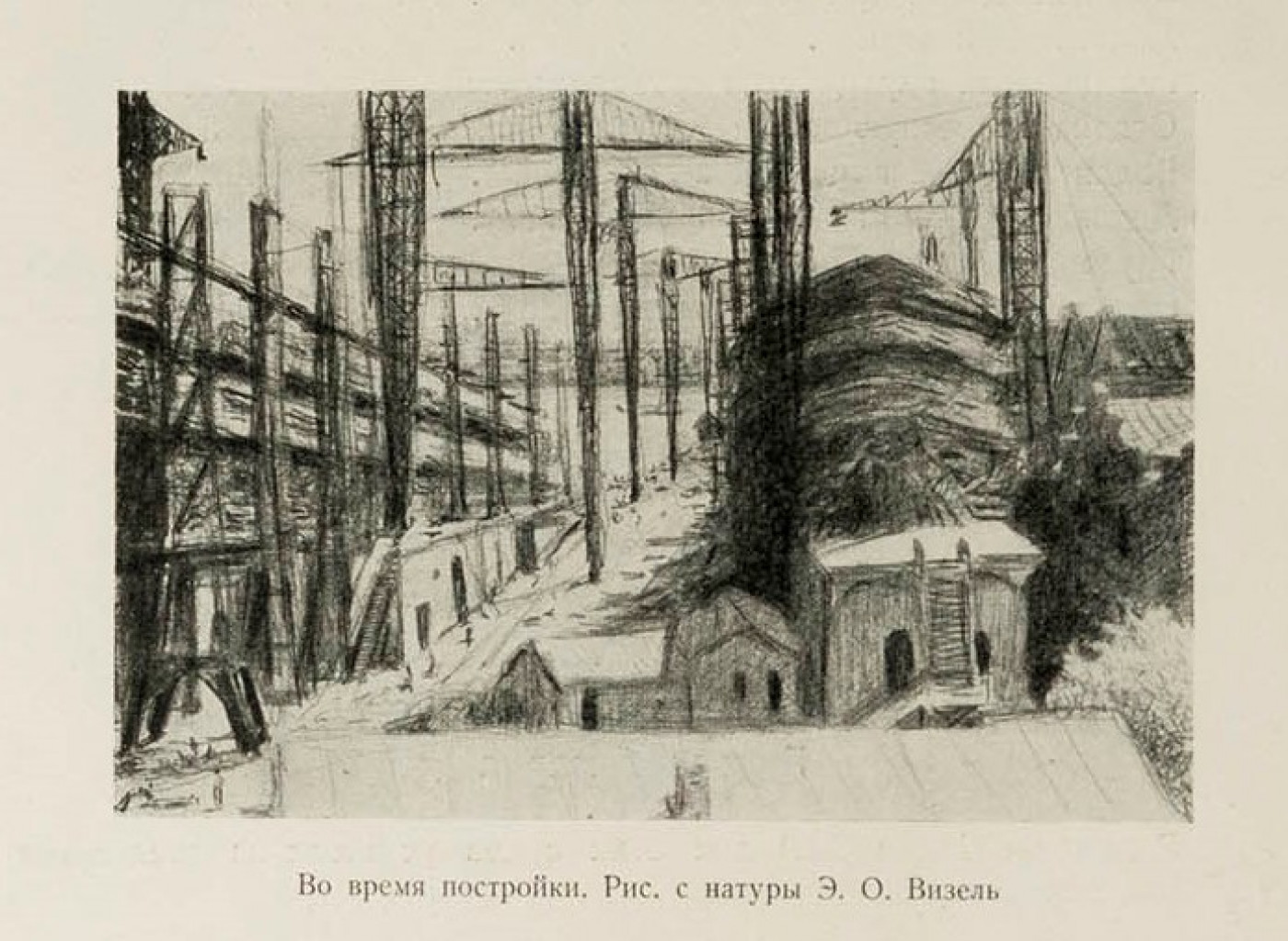
Caption translation: “Under construction. Observational drawing by E. O. Wiesel”
Aside from my personal interest in maritime terms and translation, my favourite section of the booklet describes the lives of Tovaristch Stalin’s crew members. It offers a unique insight aboard the vessel, providing the reader with photographs and detailed descriptions of the crew’s living quarters. According to the booklet, “Each cabin is suitable for two people, measuring 2215 x 1440 x 2600mm in size. With such sufficient cubic capacity, each crew cabin is equipped with two bunks, closets for clothing, a table and two chairs.”
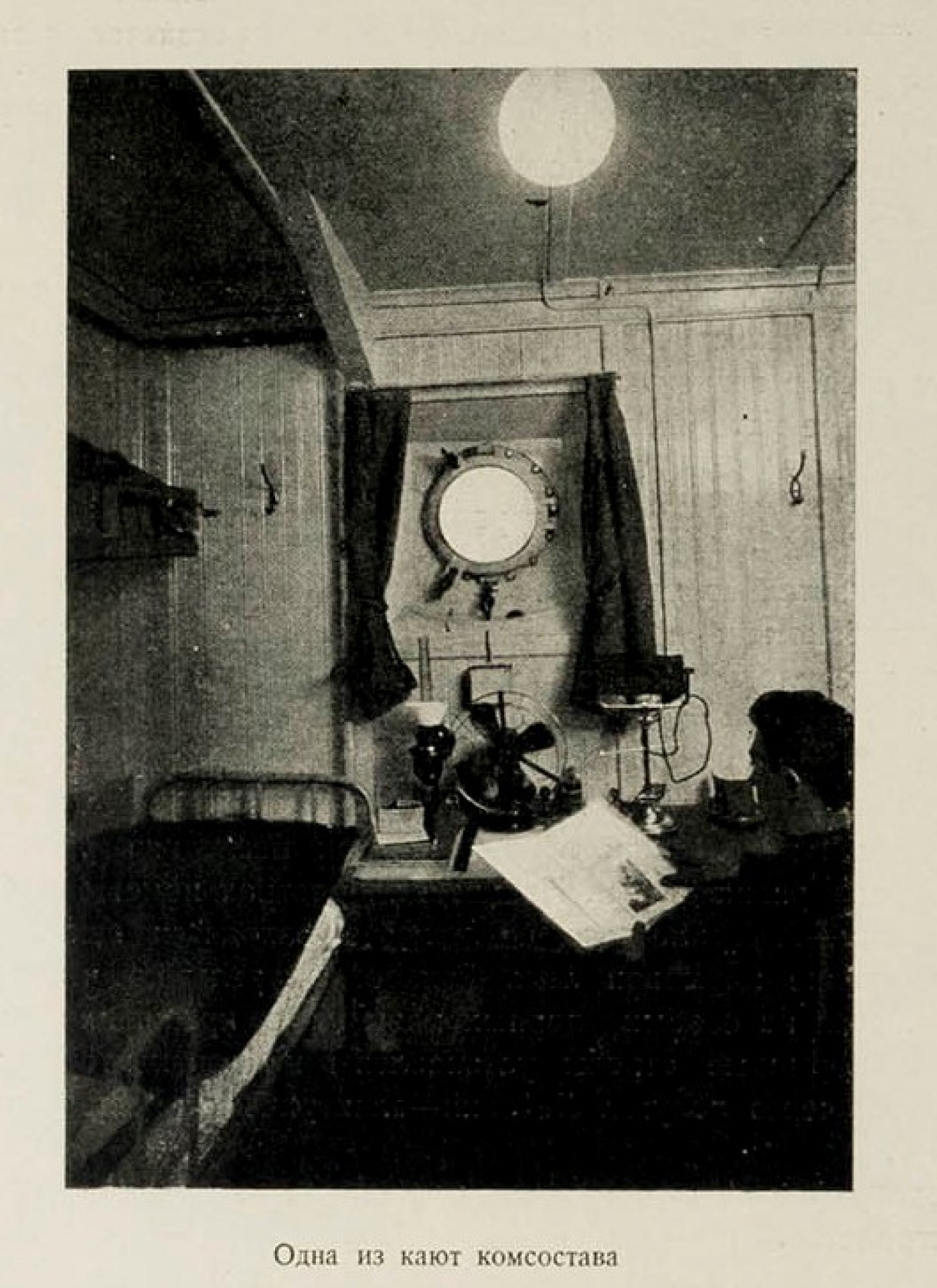
Caption translation: “One of the Commander’s cabins”
This section also includes pictures of the crew at work, including this lovely photograph titled “In the boiler room”:
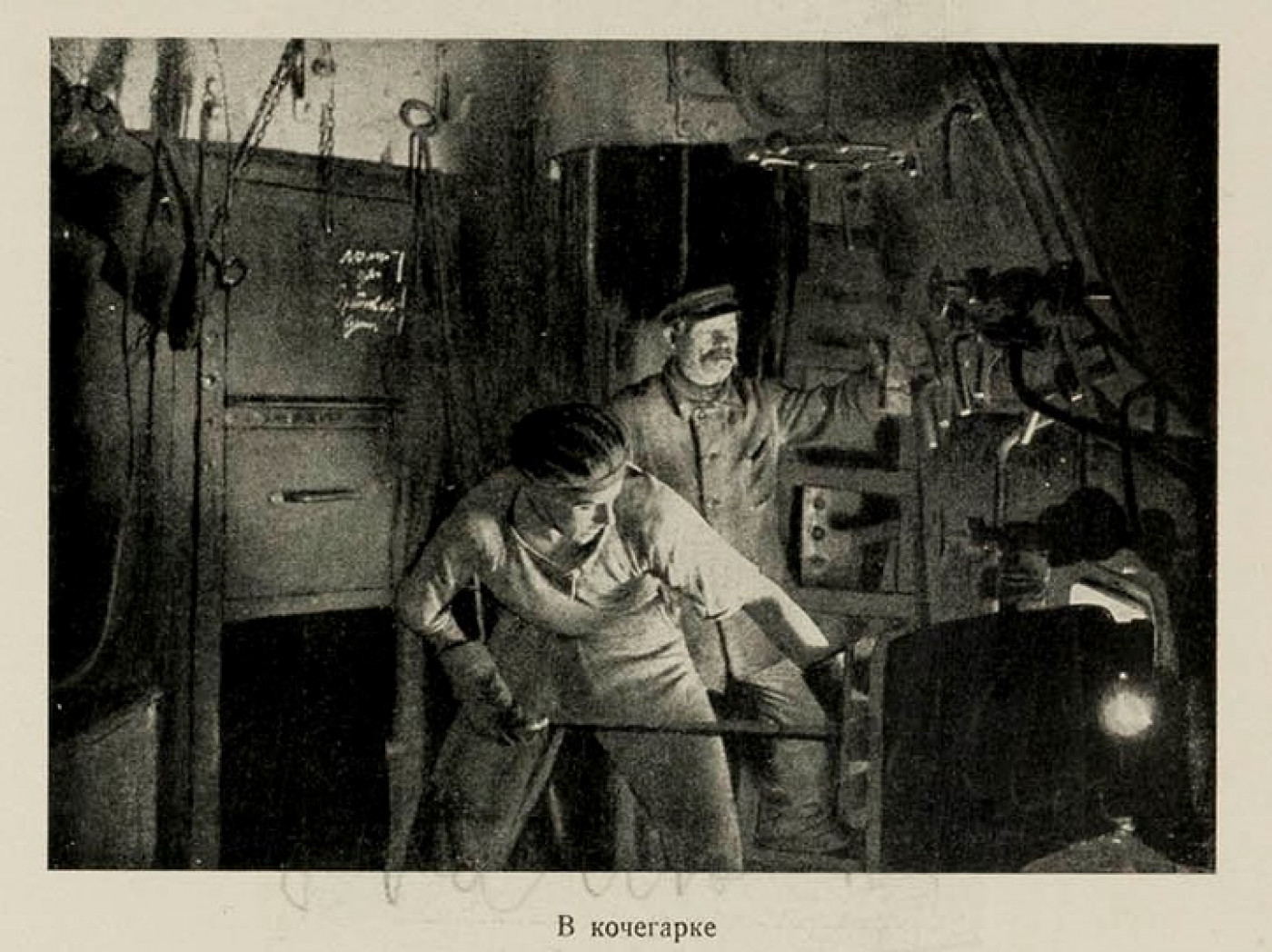
I think this look behind the scenes of Tovarishch Stalin is what makes this booklet my favourite foreign language object. In my opinion, the best part of working with archival material is the stories that the objects tell, and this booklet is almost like a time capsule capturing the everyday lives of Tovarishch Stalin’s crew members.

